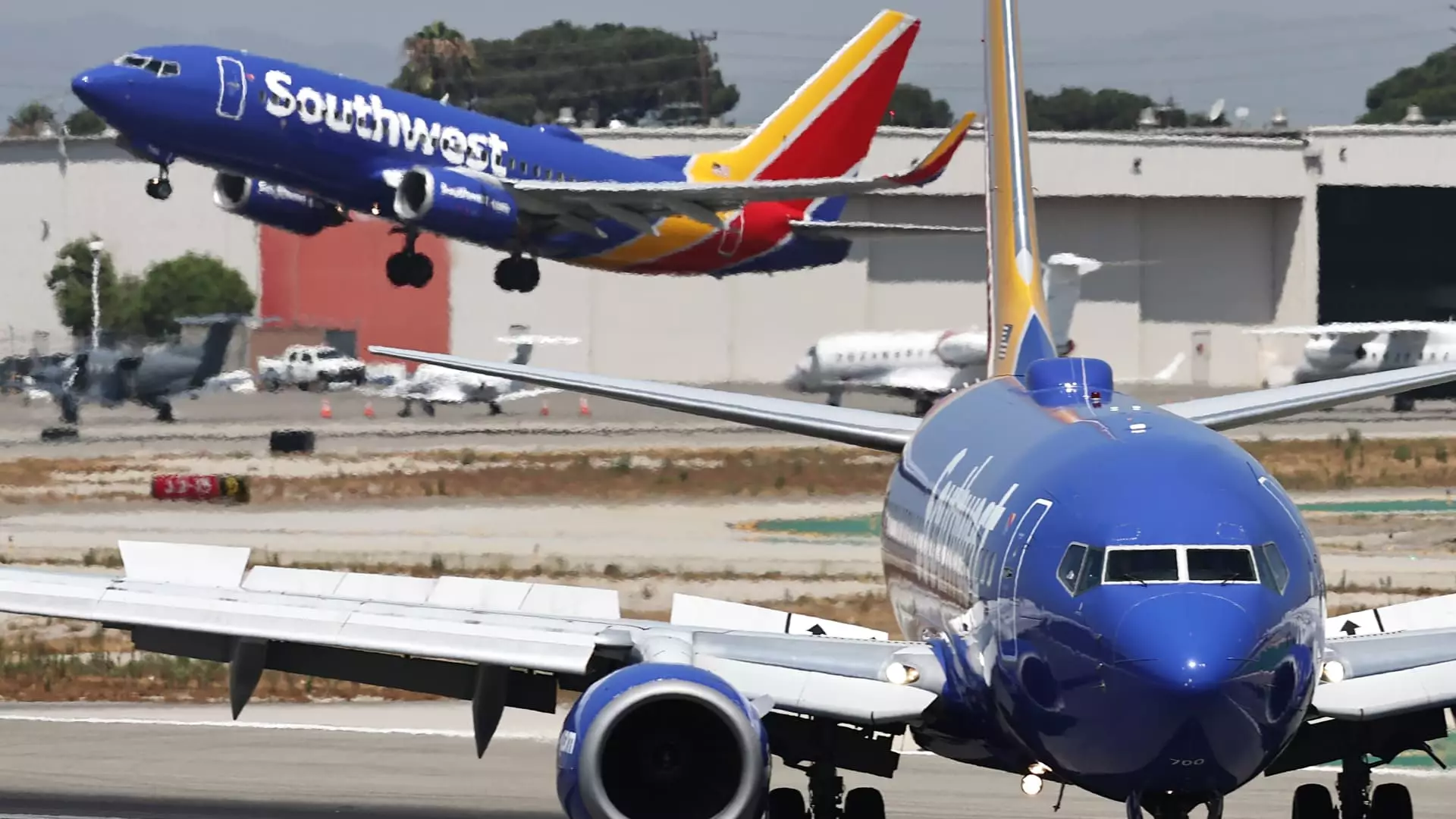In a strategic move to reassert its position within the aviation market, Southwest Airlines has bolstered its projected revenue forecast for the third quarter. This adjustment comes amid rising external pressures, particularly from activist investor Elliott Investment Management, which has called for significant leadership restructuring within the company. Southwest anticipates a unit revenue increase of up to 3% compared to the previous year, a marked change from earlier predictions that suggested a potential decrease. Factors contributing to this optimistic outlook include a promising rebooking initiative of passengers affected by a major industry outage in July. Such contingencies highlight the airline’s agile response to unexpected challenges, illustrating effective operational adjustments that can enhance financial viability in a turbulent market.
In an effort to strengthen governance and oversight, the airline’s board has approved a significant share buyback program worth $2.5 billion. This not only serves to enhance shareholder confidence but also reflects an aggressive stance towards optimizing capital allocation amidst evolving market dynamics. Adding seasoned industry professional Bob Fornaro to the board marks another strategic move to harness experienced insights, as Fornaro has a rich legacy with the airline, including previous roles at AirTran and consulting for Southwest. His experience in navigating industry complexities may prove invaluable as Southwest seeks to navigate its future amidst challenges posed by shareholders and competitors alike.
Southwest Airlines is not just reacting but also actively reinventing itself. The airline’s recent announcement of major operational shifts—including the introduction of assigned seating and extra legroom—marks a pivotal shift from its traditional business model. These changes are projected to yield substantial financial benefits by 2027, with estimates suggesting an increase of $1.7 billion in earnings before interest and taxes. However, the implementation phase is not without its challenges; seating alterations will not be operational until 2026, pending timely FAA approvals and aircraft modifications. Such innovations signal Southwest’s commitment to enhancing customer experience while simultaneously seeking revenues optimization.
Amidst changes, Southwest has reaffirmed its commitment to customer-centric policies, particularly regarding its long-standing baggage policy that allows customers to check two pieces of luggage for free. By prioritizing customer experience over potential revenue from baggage fees, the airline aims to sustain its market share in a highly competitive environment. This stance reflects an understanding of brand loyalty’s importance, an area where Southwest has often excelled compared to its peers who have adopted fee-for-service models.
Yet, the road ahead is not devoid of obstacles. Southwest faces significant hurdles due to delays from aircraft supplier Boeing, particularly with respect to its smaller aircraft, which are crucial for operating specific routes. These delays have necessitated tough decisions, including route cuts in major hubs like Atlanta and potential job reductions for hundreds of flight attendants and pilots. Such operational contractions underscore the challenging reality of balancing service offerings with financial prudence in a landscape where demand and supply are frequently at odds.
The impending transition in Southwest’s leadership, highlighted by Gary Kelly’s announcement to step down by the end of next year, places the airline at a critical juncture. As Elliott Investment Management continues to push for a change in the top echelons of leadership, the company must carefully manage both shareholder expectations and market perceptions. The internal dialogue among executives during investor presentations will be pivotal in reassuring stakeholders of Southwest’s trajectory towards growth amidst the turbulence that surrounds it.
The path ahead for Southwest Airlines is filled with both promise and pitfalls. As the airline adapts its operational model and navigates intricate market dynamics while addressing shareholder demands, its ability to balance innovation with financial sustainability will be instrumental in defining its success. With a clear focus on customer experience and strategic adaptations, Southwest is poised to navigate an ever-changing aviation landscape. The outcome of this balancing act will likely resonate throughout the industry, making Southwest’s journey one to closely watch in the coming months.


Leave a Reply